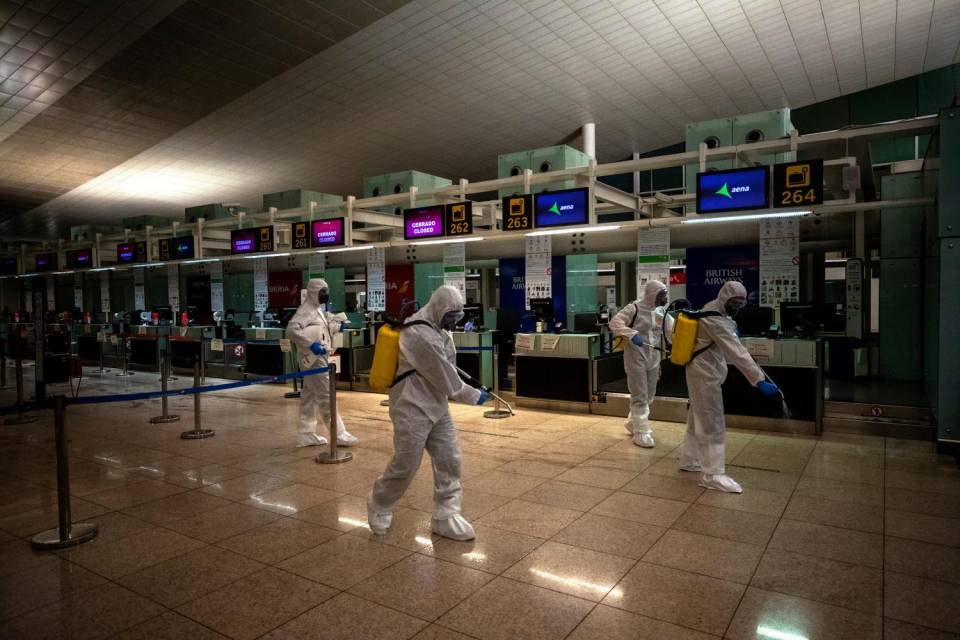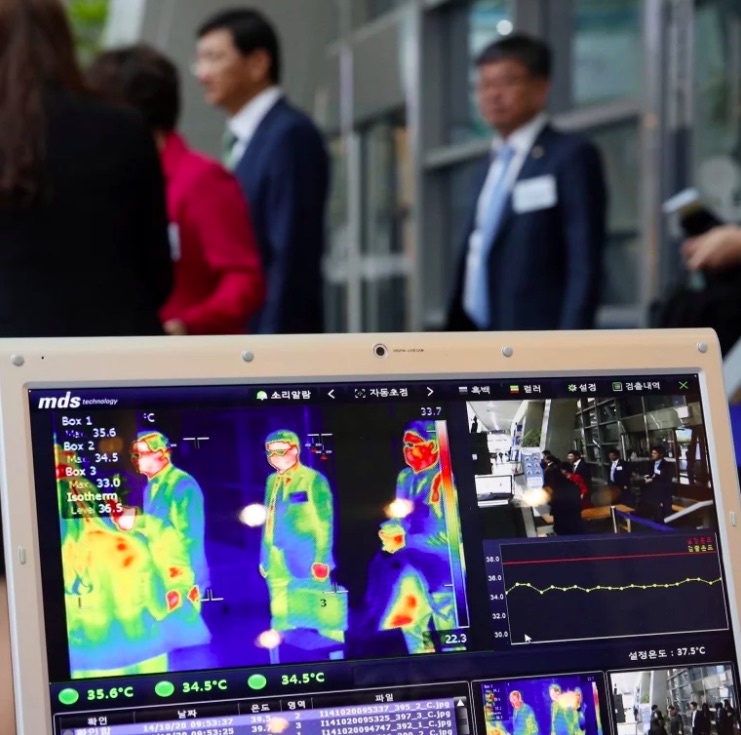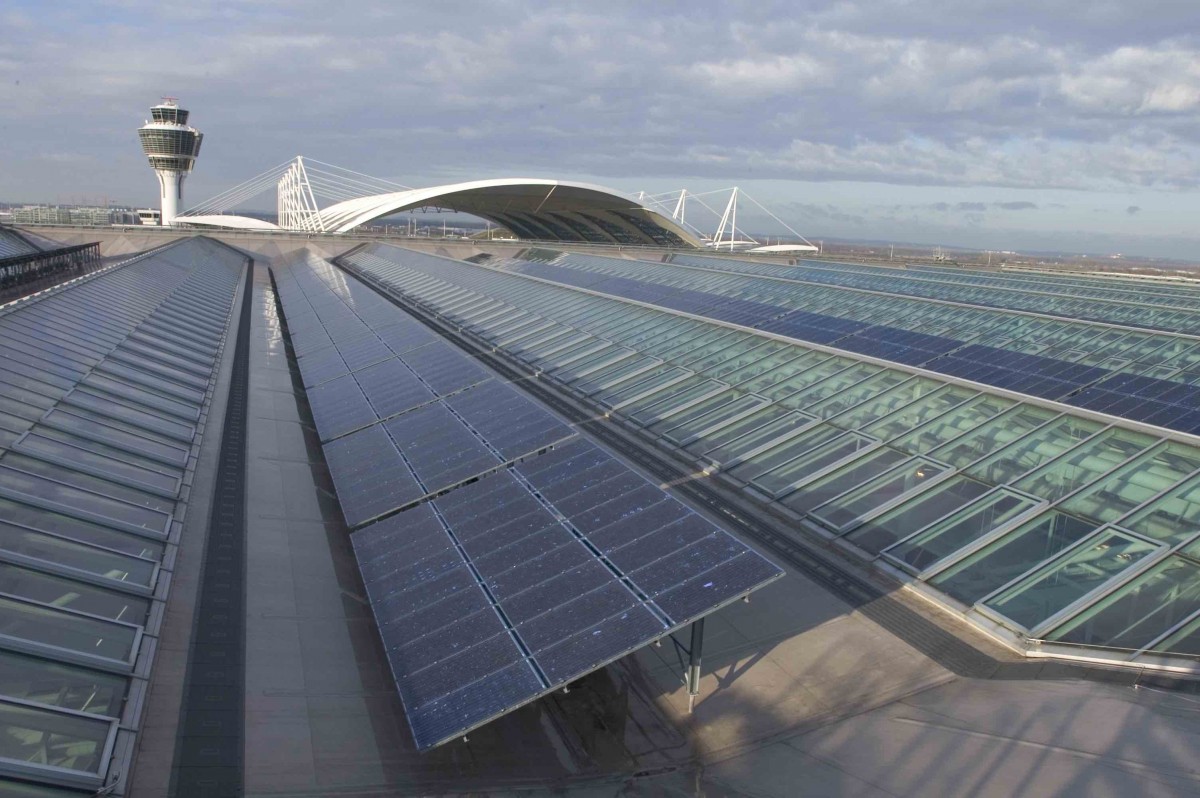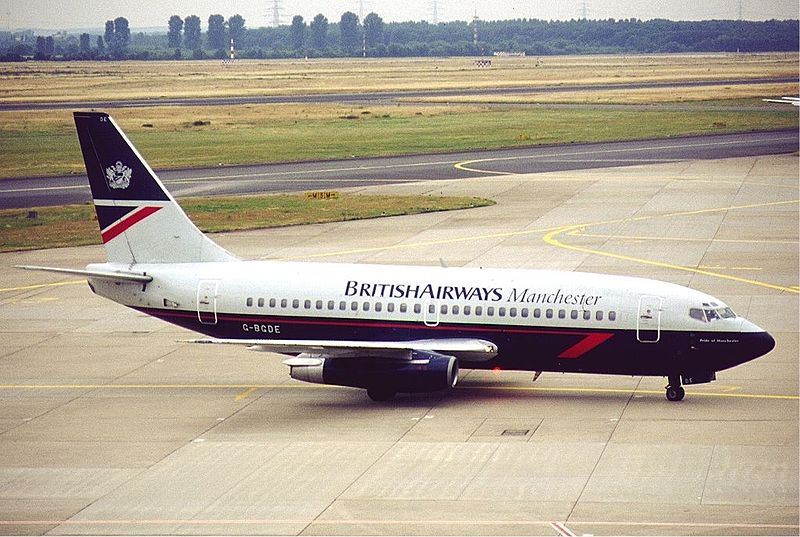This is the second article in a series about how the coronavirus will transform the aviation industry.
How should governments bail out aviation?
-

-
Last time, we looked at how the current crisis will drive automation and digitalization in the aviation industry. Today we’ll focus on how bailouts will change the way airports and airlines do business. How can bailouts drive innovation? And what kinds of bailouts should we definitely avoid?
-
Return of the state
For much of its history, civil aviation was controlled by national governments. They provided substantial subsidies to airports and airlines—who, in turn, prioritized national interests over profitability and customer service. That state-led model began to change in the 1970s, when deregulation led to the commercially driven airline industry that we know today. At the same time, governments reduced their financial support to airports, encouraging them to find other sources of funding. By 2019, more than 40% of the world’s air traffic flowed through airports that were either fully or partially privatized. And while most airports remain in the hands of public authorities, they derive about 40% of their income from commercial activities like retail, parking, and property development.
Right now, the commercially driven model of civil aviation is facing the biggest crisis in its 40-year history. Passenger figures have plummeted. Global heavyweights like Lufthansa and Cathay Pacific have cancelled nearly all their flights. Many airports have closed, or are operating on a skeleton schedule. In response, airports and airlines are calling on national governments for enormous bailouts. The sums being discussed are staggering: in the US alone, the industry is likely to receive more than $30 billion in federal aid.
Some of these requests appear more legitimate than others. Without naming names, there are a bunch of airlines out there who suffer from chronic mismanagement, and were already on the verge of collapse. They’re using the crisis as an excuse to ask for what essentially amounts to corporate welfare, funded by taxpayers. Whether that’s a justified expenditure, or whether the virus simply accelerated those airlines’ inevitable decline is up for debate.
On the other hand, the current crisis has reminded us that aviation is essential to keep the global economy going. For the hundreds of millions of people who study, work, and retire across great distances, air travel has become indispensable for maintaining personal and professional ties. Billions more depend on aviation to supply them with medicine, electronics, and much needed vacations: things that increase our longevity, and improve our quality of life. And finally, a lot of jobs are at stake. Airports are typically one of the largest regional employment centers, providing work for tens of thousands of people. Millions more are employed in industries directly linked to aviation, ranging from hospitality to engineering.
Clearly, a persuasive argument can be made that national governments should not allow aviation to collapse in a moment of crisis. It’s likely that we’ll be seeing public subsidies flowing into airports and airlines very soon, to the tune of several hundred billion dollars. But there’s no such thing as a free lunch. The question is, what should governments ask for in return?

-
Good bailouts vs. bad bailouts
In a nutshell, there are two big issues that need to be resolved. The first is how the bailouts should be disbursed over time. Most governments are discussing massive, one-off infusions of cash. Some industry leaders are arguing that that’s a bad idea. Why? Right now, we have no time frame for when airport operations might return to normal. It could be a month or two, or maybe half a year. It could also be several years. With so much uncertainty, airports and airlines run the risk of quickly burning through a huge amount of cash in just a few months, with still no end in sight to the crisis. At that point, airlines would find themselves on the edge of bankruptcy, facing an unsympathetic public that’s unlikely to support a second round of bailouts.
A better approach would be for governments to guarantee monthly payments throughout the duration of the crisis. That would go a long way towards helping airports and airlines stay afloat, and would ensure a minimum level of flight connectivity needed to keep the economy going. At the same time, governments could allocate additional funds for purposes that go beyond the simple maintenance of day-to-day operations.
That leads us to the second important issue: namely what, exactly, the bailout money should be used for. Less successful governments will simply try to prop up the status quo. By contrast, smart governments will use bailouts to drive innovation across the aviation industry. They will provide generous support on the condition that recipients use those funds to address two urgent questions: how to make airports and airlines disease-proof, and how to decarbonize them.

-
A ‘health’ bailout?
Most urgently, we need to implement mandatory health monitoring and health reporting standards across the aviation industry. Temperature check sensors are essential for preventing the spread of diseases by infected passengers. They’re a common feature of Asian hubs, who introduced rigorous health checks following SARS. During the current crisis, Taiwanese airports took that approach one step further. By sharing information between immigration authorities and health care providers, they leveraged big data in order to monitor arriving passengers throughout their quarantine period.
Thanks to the lessons learned from SARS, many Asian airports are way ahead of us on matters of health and hygiene. They’ve figured out how to contain the spread of diseases while keeping borders open and planes in the air. Moving forward, airports everywhere will need to introduce mandatory health screenings and install health monitoring equipment. That will require big changes in terminal operations, technology, and design. And if we want to prevent a repeat of corona, the industry will also need to establish globally binding reporting standards. For example, if an airport in China detects an unusual spike in sick travelers coming from, say, Thailand, that information would immediately be transmitted to airport authorities worldwide.
The takeaway: COVID-19 has exposed significant gaps in aviation safety. Since September 11th, airports have spent a lot of time and money fighting terrorism. They’ve designed processes that aim to identify a tiny number of malicious travelers in order to protect the overwhelming majority. The post-corona paradigm will require a major rethink of that approach. Any of us could be an unwitting carrier of disease: so airports and airlines will need to continuously monitor the health status of all passengers. Smart governments will direct significant resources towards these initiatives.

-
A ‘green’ bailout?
Targeted bailouts should also be used to address another urgent challenge: climate change. Quite frankly, I’m guessing that many people don’t have the bandwidth to think about that right now—which is totally understandable, given what’s been going on the past few weeks. But even if we manage to resolve the current crisis quickly, airports and airlines will still need to tackle the logistical, technical, and financial challenges posed by decarbonization. We can’t ignore them if we want our industry to prosper in the long run.
Smart governments will provide support for decarbonization projects: investing in capital improvements that airports desperately need, and that will help to jumpstart the economy. As I’ve discussed elsewhere, many airports desperately need to improve their energy efficiency. And even airlines with the best of intentions find it difficult to reduce their carbon footprint: fuel-efficient jets are in short supply, and alternative technologies have been slow to develop.
Launching a “green” bailout will empower airports to decarbonize their operations—and now is a good time to do so. Why? First, these redevelopment projects will create employment across a variety of sectors, from construction to IT. Second, the current shutdown offers a once-in-a-lifetime opportunity to complete these projects quickly and cheaply. Under normal circumstances, airports are forced to do major reconstruction work while maintaining regular flight operations. Keeping terminals open during construction slows down the redevelopment process, and it drives up costs while driving down the customer experience. By contrast, right now there are hardly any passengers around. Many terminals are shut. And even when flights resume, airports will be operating on a reduced footprint. The coming months therefore offer a unique chance to future-proof our infrastructure.
And with air traffic at historic lows, now is also the time to take gas-guzzling planes out of the sky. Decommissioning older aircraft, which are much less fuel efficient than newer ones, would be a major step towards achieving carbon neutrality. Smart governments will create scrappage programs that pay airlines to retire their aging fleet. They will also provide resources to speed up the production of fuel-efficient jets and accelerate the rollout of emerging technologies, such as electric aviation, synthetic fuels, and urban air mobility (more on that here and here).
The takeaway: Climate change adaptation is an unavoidable challenge for the entire industry. Through a ‘green’ bailout, smart governments can ensure that the current downturn leads to a positive outcome: making strategic investments in airport infrastructure and aircraft technology that will guarantee aviation’s long-term sustainability.

-
A bailout for second-tier airports?
Lastly, as bailout terms get fleshed out over the coming weeks, some governments will likely take the opportunity to remind national airlines of the very reason why they exist in the first place: to provide air service to the nation’s cities, both big and small. In Europe, a lot of airlines have quietly dropped that responsibility. Prioritizing the interests of shareholders over those of the general public, they’ve delivered healthy dividends by focusing on their most profitable routes while reducing flights to secondary cities. This has led to a peculiar aerial geography for people living outside of major hubs. If you live in Manchester, England, for example, chances are that you won't be able to find many direct flights on BA. Even Berlin, Germany’s national capital, remains woefully underserved by Lufthansa. Many of these second-tier airports primarily serve budget airlines, which limits the potential for economic development in the surrounding region. In a bid to jumpstart the economy, national governments may ask airlines to rethink their routing strategies.
The takeaway: Countries like the United States and Canada subsidize essential air service to far-flung places in order to guarantee a basic level of connectivity and productivity to all parts of the nation. If governments once again assume a larger role in the aviation industry, they may very well apply that principle to a wider range of destinations. Airports in secondary cities and rural regions could be the beneficiaries of those investments.

-
Final thoughts
Given the scale of the current crisis, government bailouts are essential to keep the aviation industry afloat. But bailouts are a double-edged sword. In the best case, they can provide stability during profoundly unsettling times, empowering airports and airlines to focus on the innovations they need to pursue in order to safeguard their long-term competitiveness. In the worst case, however, bailouts simply perpetuate unsustainable business practices, and prolong the lifespan of inefficient processes and outdated technologies.
That’s why our goal should not be to maintain the status quo—because there are a lot of problems with the status quo. The pre-corona model did an amazing job of democratizing air travel: providing affordable mobility to an unprecedented number of people, both rich and poor, and vastly increasing global connectivity, to the benefit of cities and regions around the world. But the industry was less successful at tackling the negative consequences of its rapid expansion: chief among them the impact on the environment and—as we’re now witnessing all too vividly—an increased vulnerability to disease.
Moreover, in recent years the aviation industry has been slow to embrace innovation. A lot of pointless processes continue to exist within airline companies and airport authorities, simply due to inertia. Our two main suppliers of jet planes seem incapable of delivering aircraft in a safe and timely manner. Many airports continue to depend on dying sources of revenue, while ignoring new opportunities to grow their business. And many airlines have failed to keep up with the digital expectations of their customers, whose technical literacy is growing by leaps and bounds.
Simply put: the entire industry is ripe for innovation. If airports and airlines want to survive in the emerging post-corona era, they will need to critically reevaluate every aspect of how they do business. And if aviation professionals want to remain relevant, they will need to significantly expand and update their skill set. How those innovations take place will be the subject of the next article.
In the meantime, a few questions for you: what do you think is the best use of bailouts? How could they help your organization? And if governments start to take a more active role in aviation, what will be the long-term impact?
Special thanks to Kathleen Boyd, Celia Fremberg, Doug Goldberg, and Pieter van der Horst.
-
-
-
-
-
-
-